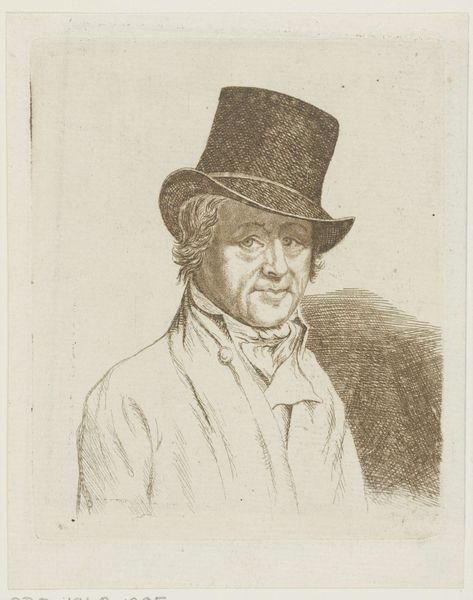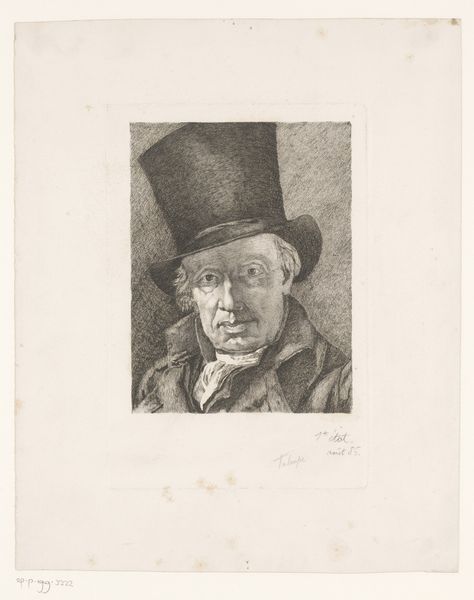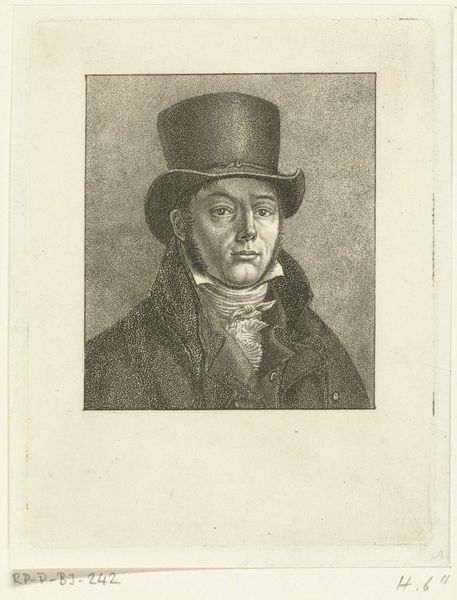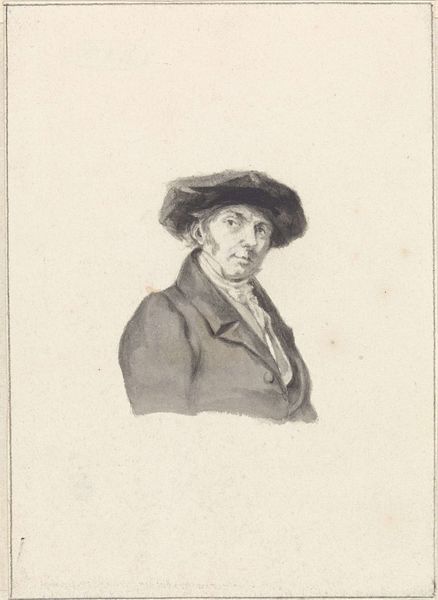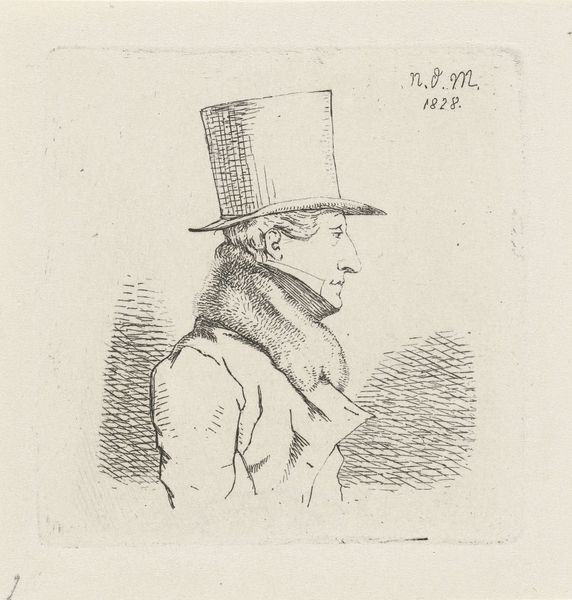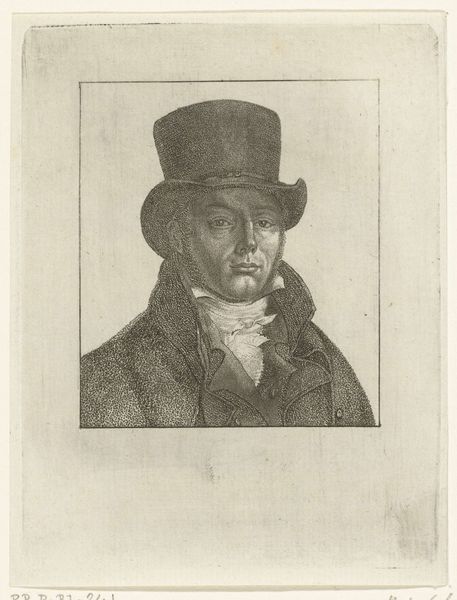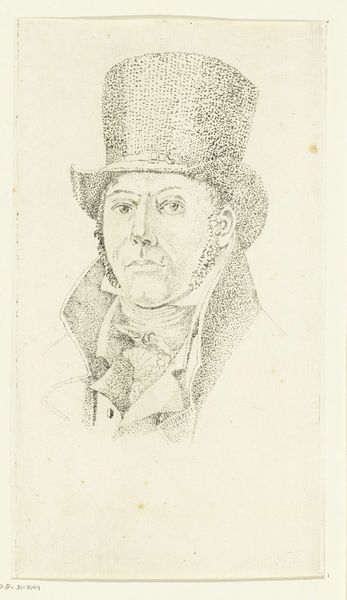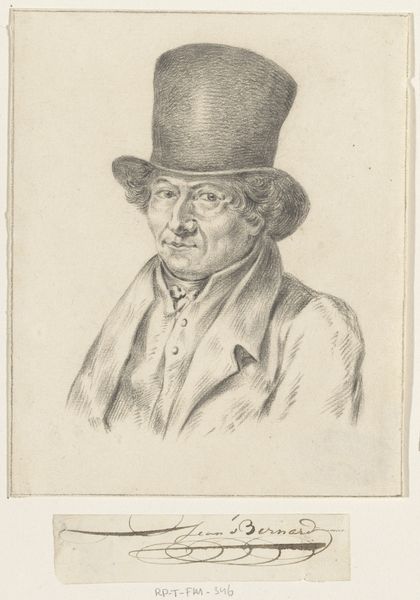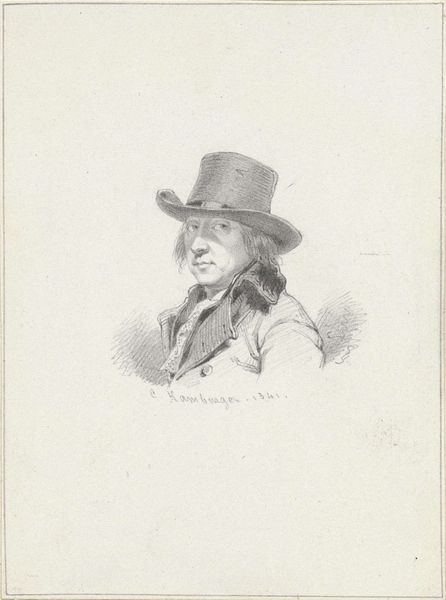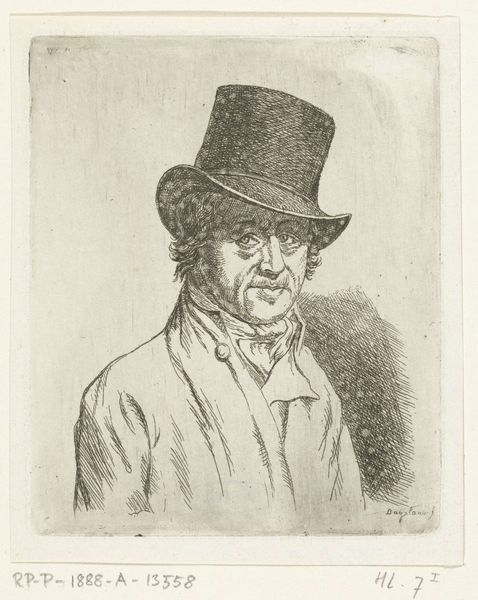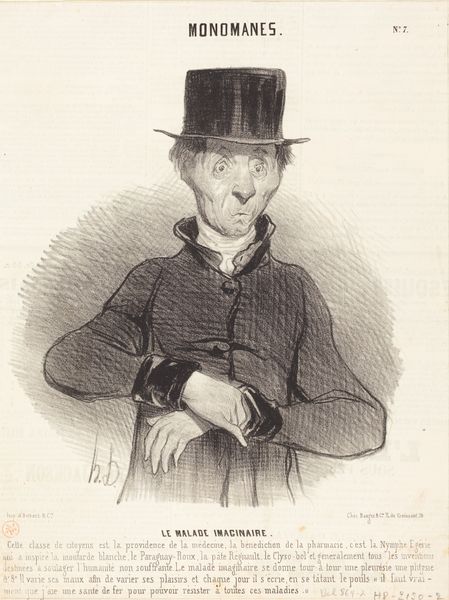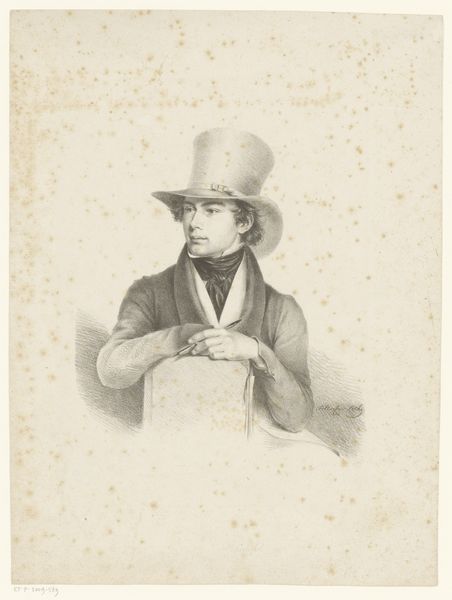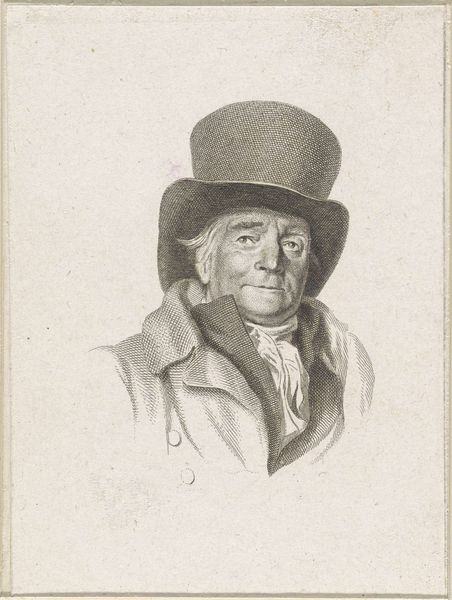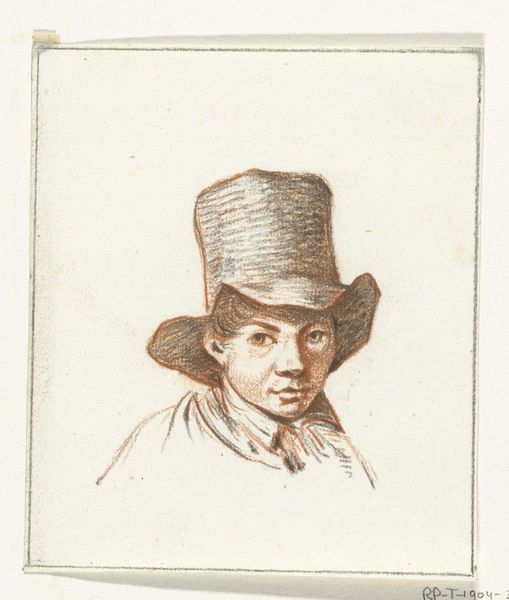
#
pencil drawn
#
light pencil work
#
pencil sketch
#
old engraving style
#
personal sketchbook
#
idea generation sketch
#
pen-ink sketch
#
sketchbook drawing
#
pencil work
#
sketchbook art
Dimensions: height 75 mm, width 64 mm
Copyright: Rijks Museum: Open Domain
Editor: This is "Portret van Wouterus de Nooy," dating sometime between 1798 and 1826, attributed to Ernst Willem Jan Bagelaar. It appears to be a pencil drawing or perhaps an early printmaking experiment. I find the subject's gaze quite intense, and the hat gives him an air of authority. What historical context can you offer about this piece? Curator: This portrait raises interesting questions about the role of art in Dutch society during a period of considerable political upheaval. The late 18th and early 19th centuries saw the Batavian Republic, French annexation, and then the establishment of the Kingdom of the Netherlands. How did artists like Bagelaar navigate these shifting political landscapes, and what role did portraiture play? Editor: That’s interesting, because you don’t initially consider the politics but you read the artwork in relation to the wider social environment. Curator: Precisely. Was Bagelaar attempting to align himself with particular social or political factions through his choice of subject? Was this a commission, a personal project, or a statement of allegiance? Furthermore, think about the materiality; is this a readily available print, making it accessible? How does this affect its socio-political implications? Editor: So, by considering the historical context, we can understand how an artwork and the public play in a political moment? Curator: Yes. Consider the choice of portraying De Nooy. Who was he, and what did he represent in his community? Portraits in this era weren't just about likeness; they were about status, affiliation, and the construction of identity. Editor: Looking closer, I wonder about the inscription on the lower corner too and how this informs us today. Curator: Exactly! The inscription identifies de Nooy, establishing a relationship of professional engagement and revealing its production and intended reception. Now, knowing this, what conclusions can we draw? Editor: I hadn't considered all of the layers of context at play within one portrait, how political and social history influenced it so much! It’s far more complicated than just seeing a drawing of a man.
Comments
No comments
Be the first to comment and join the conversation on the ultimate creative platform.
